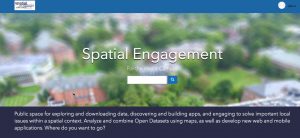We are updating our GIS data organization and structure. In the interim, please consult the “Finding Data for your GIS” below.
Finding Data for your GIS
Old Data page (may have some old nuggets of information)
Citing your Data
GIS Data: http://www.lib.uwaterloo.ca/locations/umd/digital/citation.html
Maps and Atlases: http://www.lib.ncsu.edu/maps/citingmaps.html
Thanks to Stacey Maples at Yale for these links
Finding Data for your GIS
Spatial data come from a variety of sources, perhaps including your own database files and spreadsheets. Most federal, state, regional and local governmental agencies make their GIS data available to the public. Some private companies also provide data for use in your GIS.
The guidelines below outline the basic search procedure for finding on-line spatial data.
Start the process…
- Learning Resources (resources for teaching & learning GIS)
- State & Regional Data Centers (primarily New England)
- National Data Sites
- Natural Science Data
- Social Science Data
- Cartographic Resources
- Reference Sites
- historic “new england” gis
- “population China .e00” – note Eoo (pronounced “e” zero, zero) are older ArcInfo exchange file formats
- “bedrock Alaska .shp” – note *.shp (pronounced “shapefile) files are a newer, more common Lingua franca for spatial data
- Directions Magazine – excellent news magazine covering “all things location”
- Planet Geospatial -a collection of all postings to the most popular GIS blogs
- ESRI Support Center or the ArcGIS Resources center – read the user forums, especially the summaries!
- EdGIS [Educational Applications of GIS]
- NITLE GIS [previously the go to list for teaching & learning GIS at liberal arts]
- SCGIS [very active Conservation and GIS list, must be a member to post, but you can view the archive here]
- CTGIS-L [Connecticut GIS Users, good activity]
- NEARC-L [Northeast ArcInfo User Group, good activity]
- VGIS-L [Vermont GIS, good activity – required reading for Vermonters!]
- Openspace [informal GeoDa list and other methods and open source software to carry out spatial data analysis ]
- Geography and Crime [crime analysis & mapping]
- All Points Blog
mapz: a gis librarian- VerySpatial – great podcasts
- ESRI blogs
and, be sure to visit our blogroll
